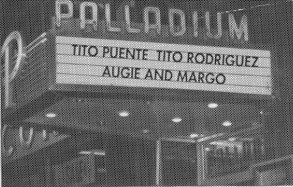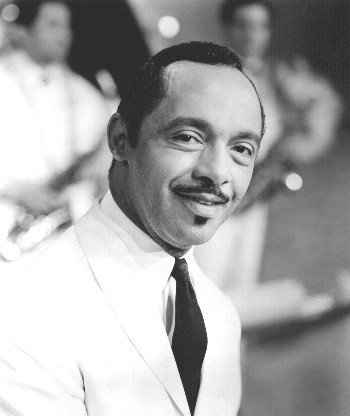This article first appeared in the Examiner (www.examiner.com)
How the mambo became the cha-cha-cha and the mambo dance craze of the 50s
By Patsy Holden
On December 12, 1949 Perez Prado, a Cuban band leader who had left Cuba to live in Mexico, recorded Que Rico el Mambo and Mambo #5 in Mexico City. The record is recognized as being one of the most influential factors in the birth of the Mambo dance craze, first in Mexico and Latin America and then two years later in North America. However, although Perez Prado and his popularized big band style of Latin music is credited for making the term Mambo famous in both the music and dance industries, the son rhythm of Cuban music can be traced back further into Cuba’s history and was developed by earlier Cuban musicians such as Arsenio Rodriguez and Orestes Lopez. In fact, the first recording of Cuban son took place in 1918 by the Cuban band called Sexteto Habanero in Havana. Just as Swing music had become a trademark of early twentieth century American music, and the Samba rhythm had became the “sound of Brazil,” so did the “son” rhythm that was often combined with European melodies while using European musical instruments become the trademark rhythmic sound of Cuba and other areas of the Caribbean.
Joseph Levy writes:
The word mambo comes from the Ñañigo dialect spoken in Cuba. It probably has no real meaning, but occurs in the phrase “abrecuto y guiri mambo” (“open your eyes and listen”) used to open Cuban song contests. In the Bantu language of West Africa, mambo means “conversation with the gods” and in nearby Haiti, a Mambo is a voodoo priestess.
The mambo as we know it today is actually a rhythm whose tempo may be slow or fast, and almost any standard tune can be set to its tempo. The saxophone usually sets the rhythm pattern and the brass carries the melody…So while it’s clear that several rhythms and dances of the period were given the same name, when it comes to the big band mambo that we know today, Prado was most likely the innovator.
Perez Prado’s Mambo Jambo, (originally named Que Rico el Mambo, recorded in Mexico [1949] and renamed for an American record cover in 1951), became such a success in America that Prado decided to tour the US. His first engagement was in April-May of 1951 at the Puerto Rico Theatre in New York, and later that year he toured eight cities on the West Coast. Each concert was sold out, despite the (then) high cost of the tickets.
Cuban music had already reached the United States in the 30s
Cuban music, however, had already reached the United States almost two decades earlier. Throughout the 1930’s, a series of events occurred that spawned the onset of Latin American music fascination in the United States. First, the release of the song El Manicero in 1931, which was extremely successful internationally. Second, the “Good Neighbor Policy” in 1933 started a steady flow of immigration from Latin America to the United States, especially to large cities like New York City and Chicago. Tango (then considered Latin music) had already reached the United States by the 1910’s, while Cuban and other Latin music (such as Samba) was new and began to grow in popularity throughout the 1930’s and 40’s. Post WWII saw an even larger surge in Latin American immigration to the United States. As a result, large Latin communities from Cuba and Puerto Rico were able to support small dance clubs in cities where Latin composers and arrangers entertained guests with music from their homeland.
Finally, in the year 1948, in New York City, the Palladium Ballroom opened on the second floor of a building on 53rd St and Broadway in New York City. Previously an unsuccessful dance studio and dancehall, the new Palladium Ballroom dance floor could hold 1,000 couples…and it did just that and more. Its tremendous success was due mostly in part to it being the first downtown dancehall to offer Latin Music and its willingness to admit Blacks, Puerto Ricans, and Cubans in a area that was previously considered “White.”
The 1931 release of the internationally popular El Manicero caused an immediate sensation in America of Latin music that had not been possible before recorded music.
Click link to listen
As Latin music continued to grow in popularity, virtually all Cuban Latin songs were called “Rumba”. The son rhythm, which was the predominant Latin rhythm from Cuba, consisted of a wide variety of tempos, none of which were called Mambo until the Mambo dance craze occurred with the release of Perez Prado’s Mambo Jambo. Hip motion, shimmies, and other African-influenced dance movements were the essences that were adopted on the dance floor, and the son rhythm that was predominant in Cuban music lent itself to a quick, quick, slow count, (all these characteristics can be seen in this video). The American professional ballroom dance world, in order to create structure and organization to Latin son music, borrowed the box-step from the Waltz to accommodate this count.
When Perez Prado’s Mambo Jambo hit America in 1951 and the Mambo craze began, the Rumba box-step, taught to American ballroom dance students as a QQS or SQQ pattern (depending on if you started to the side or forward), was quickly transformed, misinterpreted, or simply ignored by Mambo club dancers and evolved into what we now know today as the Mambo/Salsa basic. Fast-paced, innovative club dancers performed something similar to an open-box that rotated in a tight circle, and they eliminated the closing their feet in order to rotate more smoothly and to keep up with the fast music. Innovation was the key to the success of the Mambo basic dance pattern. Eventually, the Mambo “box” came to be a rock-step forward on the left, followed by a side movement to the left, with a rock-step back on the right, followed by a side movement to the right, as it is danced today.
Dancers like Cuban Pete and Millie Donay lead the Mambo craze at the Palladium in its Golden Age of the 1950’s. (For a great interview with Millie Donay about the Palladium during the 1950’s click video)
Reminiscent of dance competitions during the Lindy-hop era at the Savoy Ballroom, the Mambo dance competitions during the 1950’s at the Palladium increased pressure on the development of complicated patterns, while the East Coast Swing (developed around the same time by Arthur Murray dance studios) influenced the way the Mambo basic pattern was executed with the feet. Ballroom instructors who attended Mambo clubs, especially the Palladium where Mambo stars like Cuban Pete performed virtually every weekend, were invaluable to the standardization and codification of the first Mambo dance steps. Borrowing the idea from the East Coast Swing, the single, double, and triple steps were added between the rock steps of the Mambo as the musicians played one of three main tempos; the Bolero, the Son, or the Guaracha. All three tempos were called Mambo and it was not long until dance studios were selling the new Mambo dance to eager students. Eventually, the triple-step (Guaracha) Mambo basic was renamed the Cha-Cha-Cha. The International Style of Rumba adopted the Mambo son basic/tempo as their Rumba basic due to a difference in the use of the word “Rumba” between the two countries, while the American Style maintained the original box-step foundation as their Rumba. This differences in the Rumba-basic pattern of the American and International styles have never been resolved between the two countries.
Thank-you to John Gregory
John Gregory, ballroom instructor in Orlando since 1953, supplied an interview and documentation of the information provided in this article. John Gregory, who had frequented Mambo clubs in Chicago and elsewhere and had become very skilled at the dance, was employed by the Orlando Arthur Murray studios to teach the Mambo to the other instructors when he arrived in 1953.
© Patsy Holden














Great article!
Please correct the typo on the 7th line: “sor hythm” should be “son rhythm”
Done!